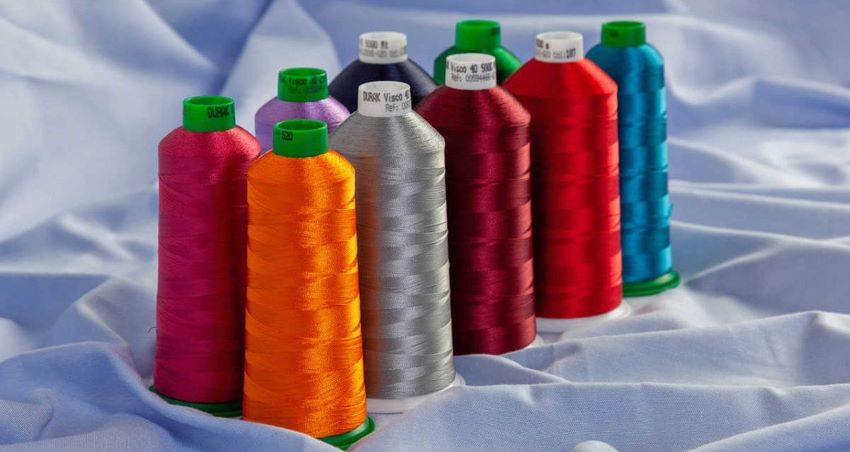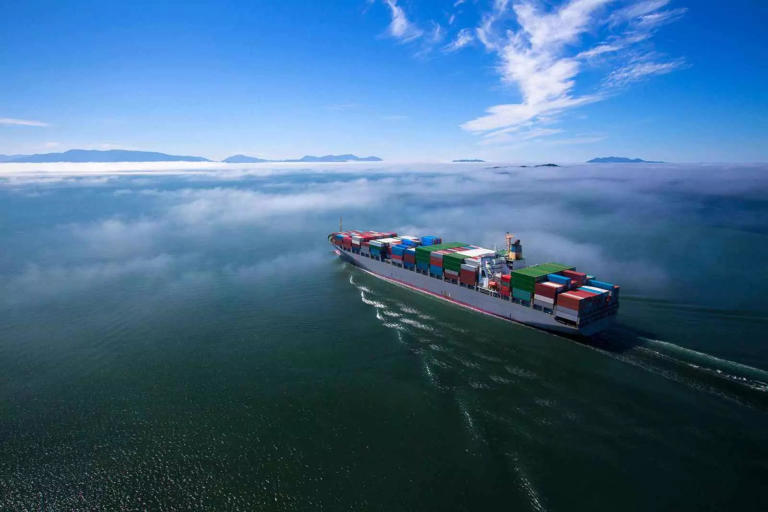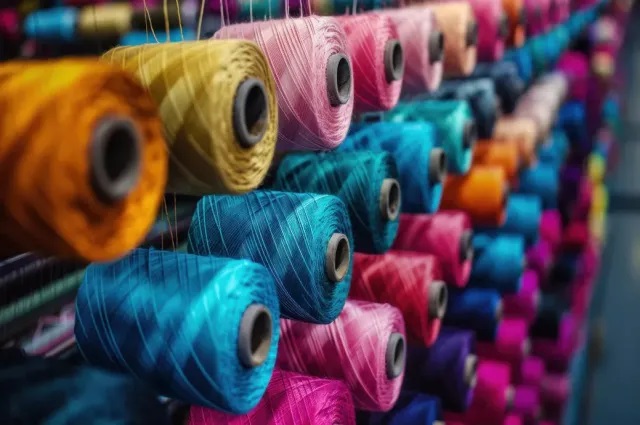
 Luxury footwear label Stuart Weitzman is looking to expand the brand’s international reach with the appointment of Wayne Kulkin as chief executive officer. Kulkin, who was previously vice chairman, has been tasked to focus on “strategic global expansion” and other growth opportunities for the Stuart Weitzman brand in his new role as CEO...Read More
Luxury footwear label Stuart Weitzman is looking to expand the brand’s international reach with the appointment of Wayne Kulkin as chief executive officer. Kulkin, who was previously vice chairman, has been tasked to focus on “strategic global expansion” and other growth opportunities for the Stuart Weitzman brand in his new role as CEO...Read More
The textile industry in Spain is mainly composed of small and medium enterprises which significantly limit the investment capacity of the sector. The family nature of most companies in Spain’s Catalonia region, the lack of entrepreneurial vision and poor motivation are the reasons for the slow growth in the sector.
Since the small and medium-sized textile companies cannot implement new strategies, there is a decline in operating margins of the whole sector. Lack of funding opportunities and shortage of specialized personnel are also reasons that are affecting modernization in the Spanish textile sector. This scenario has led to shutdown of many companies that have failed to adapt to changing market situations.
One major threat faced by the Spanish textile sector is the relocation of production activity to emerging countries, particularly in Asia. Restrictions on textile imports were removed during the liberalization of trade in 2005, which established Chinese leadership in the textile world.
The traditional commercial structure and the difficulty of access to new distribution channels has led to a high degree of fragmentation in the Spanish textile sector and resulted in lack of cooperation between enterprises.
Interstoff Asia Essential, the region’s best trade fair for the latest fabrics, trends and technologies will be held from September, 25 to 27 at the Hong Kong Convention & Exhibition Centre. With the expansion of four country or region pavilions from China, Japan, Korea and Taiwan, this edition will have a lot more to offer to visitors. Over 170 exhibitors are expected to take part. Fashionable fabrics is one of the main categories at the fair. Dali Fibre Industrial from China will display their new dual and tri-colour ‘draw textured’ mélange series which boasts of better dyeing effects. Other leading Chinese firms include Wuxi Shuangda Plush and Cixi Haiteng Plush, both producers of cashmere and imitation fur, and Jiangsu Girmes Special Textile, a supplier of high-quality velvet. Uni Textile, producers of Japanese-made woven and knitted fabrics for ladies wear with print and dye finishing effects will be present at the fair.
Functional fabrics from around Asia also feature strongly at the fair. Tamurakoma from Japan are suppliers of high-tech fabrics for sportswear and outdoor wear that boast of innovative coating and laminating, while Korean company PAKA Intertex will introduce its micro nylon or cotton and reversible fabrics. FSPG hi-tech from China will showcase their easytex breathable membrane fabric – an eco-friendly textile that has similar breathability properties to skin.
Eco fabrics are another category of the show. First-time exhibitor PT Indorama Synthetics from Indonesia will demonstrate their waste reduction credentials with Nusantara fabrics made from recycled polyester bottles. Taiwanese company Everest Textile, producers of woven and knitted fabrics for casual wear, outdoor wear and sportswear, offers a range of environment friendly products because of their sustainable manufacturing process.
Companies specializing in garment accessories will also feature at the show. Key exhibitors include Hong Kong-based Cosmos Enterprises, a button producer that uses only natural materials. Exhibitors from China include clothes rack manufacturer Taizhou Huajia Hanger, and ladies’ scarf supplier Shanghai Talent Fashion.
Elite China, Fine Japan, Premium Korea and Amazing Taiwan make a comeback this year which have increased in size from last year’s show. Featured exhibitors in these pavilions include Guangzhou Wanhua Textile, Toray Industries, Dong Il Textile and Vinwell Textile from China, Japan, Korea and Taiwan, respectively.
Value-added textile manufacturers-cum-exporters want to get rid of double taxations and ‘draconian’ excise laws, which have stagnated the entire sector's growth. Scores of representatives from different value-added textile associations recently held a meeting with Federal Secretary Commerce Qasim M Niaz, seeking an immediate end to their long-running problems.
Chairman Council of All Pakistan Textile Associations (Capta), Zubair Motiwala led the exporters to discuss the key obstacles to the sector's growth. He said the Federal government should abolish two per cent GST from the zero-rated sectors to ease their financial positions.
“The exporters are in deep financial problems from double taxations by the federal government of two per cent GST and the second by the provincial government 16 per cent on services,” he pointed out. He said customs officials are altogether indifferent to the significance of exports to the national economy as they never stay back from creating hurdles on import and export stages to perturb the stakeholders. He also pointed out four excise laws which are hitting the entire textile sector, saying that the FBR deceptively made them part of sales tax, forcing the exporters to pay the taxes anyhow.
The FBR laws of GST on selling of goods to unregistered companies are still dubious, creating problems for exporters. "Everybody is violating the law. We are under offensive," he said. Without bribe no tax refund is possible, he claimed, saying the FBR's laws and regulations are against the growth of entire textile sector.
Motiwala said the poor utility supplies with soaring tariffs wrecked havoc on the textile sector restricting its export to not more than $7 billion annually. He said the government is unjustified to force textile sector to pay bills for power thieves. With raw material like cotton or yarn, the annual textile exports stand at between $11 billion and $13 billion, he said.
The government's utility tariff plans give two messages to consumers -- either to pay bills for power thieves or just indulge in the theft. He urged the government to play its role against power thieves to end power shortage. "Some 35 per cent power loss comes through three ways: theft, line losses and pilferage," he added. He also resented soaring gas, power and water tariff which is unprecedented in entire history, saying gas was made expensive by 17 per cent and power by Rs 4 per unit. He said the government continues to bypass Ogra to set prices for key utilities.
Cotton is expected to continue losing market share this season. Cotton prices are substantially higher than polyester prices in China. And as per Cotton Advisory Committee (ICAC), the Cotlook A Index averaged 93 cents per pound in August, while polyester in China averaged 76 cents per pound. Despite the loss of market share, world cotton consumption is rising in absolute terms and is estimated at 23.7 million tons in 2013-14. However, world cotton production will be down 3.5 per cent from last season. US production alone is likely to fall by 25 per cent. Shipments from all major exporters are expected to fall, except from the CFA or franc zone in Africa, where producers are increasing production in 2013-14 and thus exports in response to higher cotton prices.
World trade in cotton is forecasted to decline by 1 million tons to less than 9 million, with this decline almost entirely accounted for by reduced imports into China. Falling mill use of cotton in China due to its cotton procurement policy - which is keeping cotton prices at levels above manmade fibers - is encouraging a significant shift in mill use to other countries.
American & Efird (A&E) one of world's leading manufacturers of sewing thread, embroidery thread and technical textiles for worldwide industrial markets, announced the release of its transparent 2012-2013 Sustainability Report. The report highlights the company's leadership and steadfast commitment to environmental sustainability and social responsibility.
"We're gratified that our newest sustainability report shows improved cumulative results from the impact of our efforts and investments," said John Eapen, Vice President Environmental, Health & Safety/Sustainability at American & Efird. "We remain especially proud of our zero liquid discharge plant in Perundari, India, the first in the thread industry, as well as our 50 per cent recycle/reuse facility in Dongguan, China. The water conserved by our facilities in India and China is equivalent to the daily water usage of nearly 7 million people within these countries."
A&E follows the American Apparel and Footwear Association (AAFA) standards for restricted substances. The AAFA's Restricted Substances List (RSL) provides guidelines for the use of chemicals and substances that are restricted or banned in the production of home textile, apparel and footwear products. The RSL is revised biannually and reflects international safety and environmental standards and restrictions.
One of the first thread manufacturers to adopt a global standard of measurement, A&E uses critical data to scrutinize its engineering protocols, equipment specifications and emerging technology, with the express purpose of upgrading systems and continuing its trend of reducing greenhouse gas emissions.
The company achieved its goal of 20 per cent reduction of greenhouse gas emissions from 2006. Through the use of engineering protocols and equipment specification and the adoption of emerging technologies and system upgrades, A&E reduced both power consumption and fuel-burning activities.
Ahmed Elbosaty, President, The International Cotton Association (ICA) has extended an invitation to Pakistan’s spinning sector to become ICA member to get benefits of international cotton trade via ICA. Elbosaty said that almost 80 per cent of global cotton trade is being done through ICA and APTMA members could get benefits and expertise of the ICA after becoming its member. In his first ever visit to Pakistan and APTMA, the ICA chief said that the association has changed its rules and regulations in order to allow spinners, weavers, retailers, etc, to become members so that the whole supply chain can benefit from ICA’s services and professional programs.
He mentioned that ICA’s arbitration is free of charge for members while non-member have to pay $15,000 as application fee for arbitration. He said that membership fee for individual (industry) is $2,000 and there would be no charges for services and training or becoming its arbitrator.
Yasin Siddik, Zonal Chairman, APTMA said that the ICA’s delegation’s visit to Pakistan would be helpful for Pakistan’s textile sector particularly spinning and such visits would bring the local and international stakeholders closer and improve mutual understandings. He said that by virtue of Pakistan’s status as fourth largest cotton producer and third largest cotton consumer, it should have at least two members from APTMA on ICA’s board of rules and regulations.
Turkey is looking to produce 2.38 million tons of cotton this season, which is an increase of 2.6 per cent compared to last year’s production. However, cotton production still falls short of the Turkish textile industry’s requirements. As per a statement by TZOB, chairman Shams Bayraktar said despite the increase in production of cotton compared to last year, it still falls short of the textile industry’s requirement in the country. In 2012, Turkey spent around $2.5 billion on imports of cotton and was the second largest importer of cotton in the world, after China. The expected cotton production for the current year still remains behind the production achieved in 2011. Cotton production decreased by 10.1 per cent to 2.32 million tons in 2012 compared to the production in 2011, which was 2.58 million tons.
During the cotton harvest period of 1995 to 2012, overall production of cotton saw an increase of 61.6 per cent, whereas production of ginned cotton increased by 56.4 per cent in the country. During the same period, cotton acreage fell from 7.56 million hectares to 4.9 million hectares, indicating a decline of 35.4 per cent.
Cotton is a strategic product for Turkey, as millions of temporary workers, employers, dealers, and transport employees in the country are dependent on cotton to make a living.
The International Textile Manufacturers Federation (ITMF) annual conference 2013 will be held from September 8 to 10, 2013, in Austria. The conference, with the theme ‘Rebalancing the Power between Manufacturing and Retail’, would focus on the changing relationship between producers and retailers in the difficult business environment faced by the global textile supply chain. It would include sessions on cotton and man-made fibers, e-commerce, Europe’s textile industry, the textile supply chain, technical textiles, non-wovens, the global textile machinery market and China’s textile industry.
The ITMF provides a forum for discussion on matters concerning textile companies. It allows textile trade associations to exchange information on matters affecting the textile industry, consistent with the trade regulation laws of the nations represented, and performs the functions of a liaison agent between textile industries and governments and intergovernmental organizations interested in the textile industry.
Representatives of several textile associations would be speaking at the conference. Some of them are: Terry Townsend, Executive Director, International Cotton Advisory Committee (US), Fritz Grobein, President, Bremen Cotton Exchange (Germany), Josue Gomes De Silva, President of ITMF (Brazil), Kai Hughes, MD, International Cotton Association (Germany) among others.
The Bangladesh Garment Manufacturers and Exporters Association (BGMEA) has proposed a minimum 50 per cent wage hike for garment workers. This decision has been arrived at considering inflation, price index, nutrition, transport and house rent.
Bangladesh had set up a panel to raise the minimum wage for garment workers following a factory collapse that claimed over 1,000 lives. The panel was made up of factory workers, factory owners and government representatives. In 2010, Bangladesh increased the minimum wage for garment workers by 80 per cent following worker protests. The first minimum wage board was constituted in 1994.
A revised minimum wage could help women working in harsh conditions who have few other places to go to. Garment workers have been agitating for better pay and working conditions in recent months since inflation has been high. These workers sew clothes that earn the country foreign currency, so they feel they deserve a better deal.
However, garment manufacturers are unhappy. They say that since a minimum wage was fixed as recently as 2010, it should be reviewed at a later date. They say they are suffering because of missed shipments and disrupted production due to strikes and that a minimum wage provision will hurt them.
www.bgmea.com.bd/













